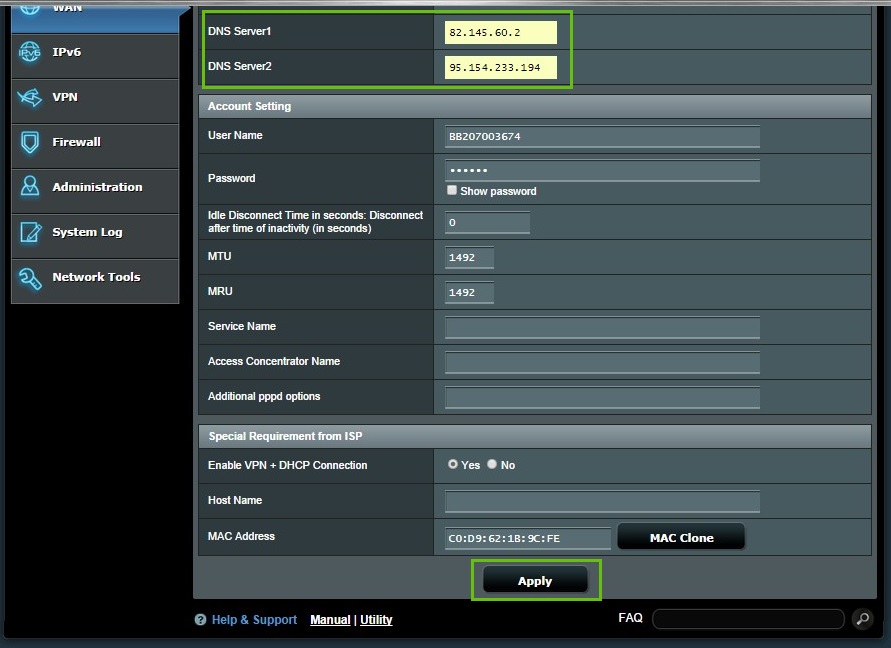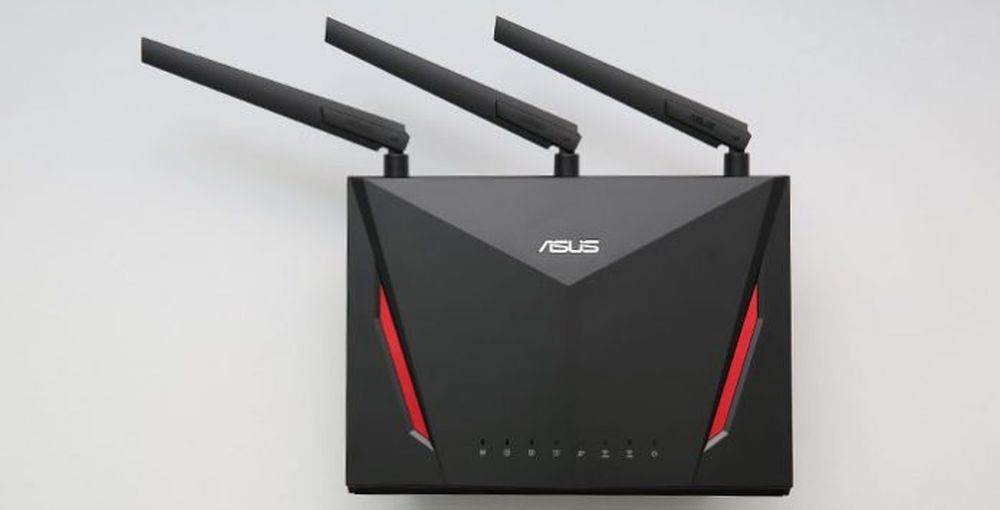

And no, it’s not because of the front-facing large strip of lights which is there only for cosmetic reasons, it’s because they’re positioned on the left and, while the LEDs themselves are bright enough, the icons are very hard to see. The good news is that there are multiple silicone feet to keep the router in place, regardless of the number of connected cables.Īs for the LED lights, things are a bit different than with other Asus routers. Both the RT-AX56U and the RT-AX58U could be mounted on the wall, but it seems that the RT-AX82U does not have mounting holes, so the only position available is flat on the desk (more likely the wavy design made it difficult to pull off). While testing the Asus RT-AX82U, the case got warm on the bottom, near the middle, but it shows no signs of overheating which is always nice to see on a networking device. On the top of the plastic case, in the middle, Asus has added four cut-outs and there are other ventilation holes on the rear side, while pretty much the entire bottom side is covered by various cut-outs to ensure a proper heat management. I thought that Asus considered the Asus RT-AX56U or the RT-AX58U too ‘entry-level’ and that’s why it added non-removable antennas, but it seems to be a generalized thing with other manufacturers as well (yes, I’m looking at you, Netgear).
#Asus router review upgrade#
Furthermore, the plastic case is covered by a black matte finish and at the back of the router, there are four antennas that can’t be removed, so there’s no way to upgrade them. Even though it has an aggressive look, the case is surprisingly compact, measuring only 10.84 x 7.25 x 6.50 inches which is still a bit more than the RT-AX58U, but far lower than the R7000p which went for a similar design approach a few years ago. After opening the case, I saw that this light effect is achieved with the help of 22 individual LEDs that shine through a couple of pieces of plastic (that uniformize the light).

But probably the most interesting design element is the front-facing LED sections (called Asus Aura RGB) that can be customized using the dedicated app (or you can just turn it off). While the RT-AX56U and the RT-AX58U had a relatively unobtrusive look, the Asus RT-AX82U is one of the most in-your-face looking wireless routers, sporting a case that’s inspired by sci-fi battleships, featuring sharp angles and various unexpected ‘exhaust vents’.

#Asus router review update#
Update : I have updated the Asus RT-AX82U to the latest available firmware (3.0.0.4.386.43129 – the throughput test has been done on this firmware) and I have added a couple of comparison graphs with the RT-AX86U and the TP-Link Archer AX73. That being said, let’s have a closer look at the Asus RT-AX82U and see how it performs with both 802.11ac and 802.11ax wireless clients. The problem is that Asus has already announced a WiFi 6E router at the end of this year (and probably more to come next year), so why should anyone invest in a WiFi 6 router right now? It’s true that the WiFi 6 still hasn’t had enough time to settle (the Asus RT-AX82U is still in the WiFi 6 draft stage), but a lot of manufacturers have included AX WiFi adapters into their products (laptops, smartphones), so, if you’re coming from an older standard than AC and have some compatible client devices, then the WiFi 6 will bring you some significant benefits. At the same time, the Asus RT-AX82U does come with 1024 QAM support and it has implemented the NVIDIA Geforce Now Cloud Gaming Optimization (not sure whether the TUF AX3000 supports 802.11d link aggregation, but the RT-AX82U surely does).

It’s common knowledge that RGB does increase the performance of any electronic device and whether the manufacturer went overboard to let you know that this is a gaming router, it’s up to everyone’s taste, but on the inside it’s very similar to another gaming-focused router, the Asus TUF AX3000 (it’s also very close to the RT-AX58U).


 0 kommentar(er)
0 kommentar(er)
